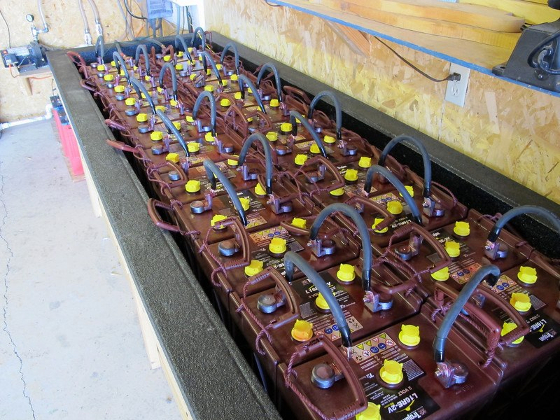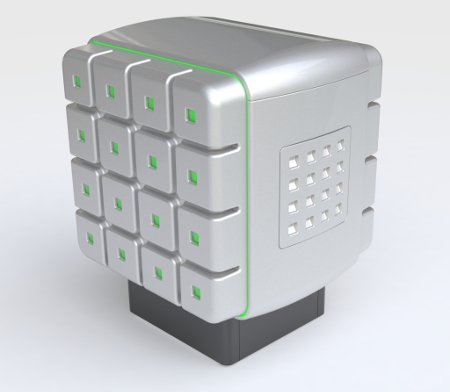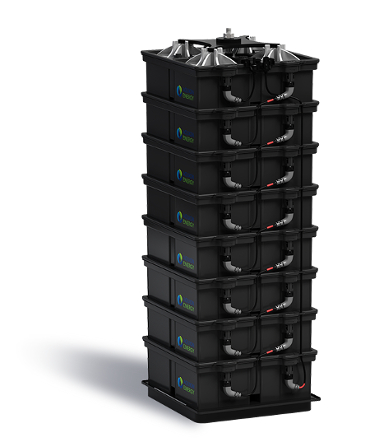For a home power system, solar battery banks can store the DC current generated by either your home solar or wind generator (as well as your power grid DC connection) into AC power. When your bank is juiced up, you can use it instead of your grid connection to reduce power bills.
The cost of solar systems have become more affordable for everyone from a small business user to a small or median income household because of market forces pushing the technology to be available in everyone's home. Chinese manufacturers are competitively pricing quality solar cells and battery storage to allow even their own people to convert to solar as soon as they can manage.
Solar battery banks are also better as emergency power source than diesel fuel generators: which can generate toxic fumes.
Tesla is a brand in the U.S. that is heavily promoting the conversion of all power generation to solar off-grid solutions but it is still expensive for the average Filipino home at up to $5000 for a Tesla Powerbank to be set up in a Filipino home. The brand has no local official presence largely because of an oligarchy monopolizing the local power grid. Instead the local power grid is offering its own solar installation package for a premium for middle-class homes.
Still, Filipinos can reduce costs incurred from using the national power grid by setting up a sizable power bank in your home using cheap storage batteries--there are China branded units that can offer as good utility as western brands and install solar cells on their rooftops. You can choose from the cheapest: rechargeable lead-acid batteries, to more efficient lithium-ion storage, to green state-of-the-art low tech "saltwater" batteries for safety and reliability. In the future, graphene batteries and solar cells will be available at the retail home user level too.
Tesla has offered all of its patents on solar battery banks and motor vehicle hybrid power as open source so that the community of solar power enthusiasts and research labs can feed off what they have already done and fuel more development and improvements. Cheap solar tech power banks should encourage DIY hobbyists to adopt the technology and create a wider user base.
Works for Remote Communities
Remote communities like seaside fisherman hovels or mountain enclaves of indigenous tribes are settlements that can have self-housed power generation if there is no means to connect that geographic area to the local or national electricity grid.
Stand-alone power systems may include solar panel arrays on the roof or wind turbines, a battery bank, inverter, battery charger. At the moment, diesel fuel emergency generators are what most Pinoys are used to for back-up power.
Battery banks may be the single most important component of a stand-alone, off-grid power system if they become cheap enough to power small homes and small communities
Your investment in a power bank array of solar batteries must be computed off the cost of power you consume in your home during the typhoon season in the Philippines because it is during this time that most areas lose power when the electricity grid is shut down or severely damaged by storms. You may need storage to cover a week at most of power outage.
The kind of DC converting equipment you have installed (solar or wind) and physical limitations where your solar battery bank will be placed should also affect your set up.
 Traditional lead acid battery power bank stack.
Traditional lead acid battery power bank stack.
In the Philippines, not everyone is a DIY knowledgeable person so you can get a licensed professional electrician to help you install your own power bank so it is set up properly and avoid any situation where battery fumes can cause an explosion or any wiring problems.
Fuel-Cell Generators Anyone?
Domestic-sized fuel cell generators can also produce electricity and heat for your home. They consist of a complete fuel cell and grid connect system in a unit about the size of a washing machine. They can be used to provide power during a grid power failure. Fuel cells are very much more expensive than other forms of generating green energy.
They depend on converting hydrogen into electricity but are designed to operate at a lower temperature and can be installed indoors or outdoors to power, homes, small businesses and even data center facilities.
 Image Credit: Redox Power Systems
Image Credit: Redox Power Systems
A modern, state-of-the-art home fuel cell battery bank,
Redox Power Systems' Cube


